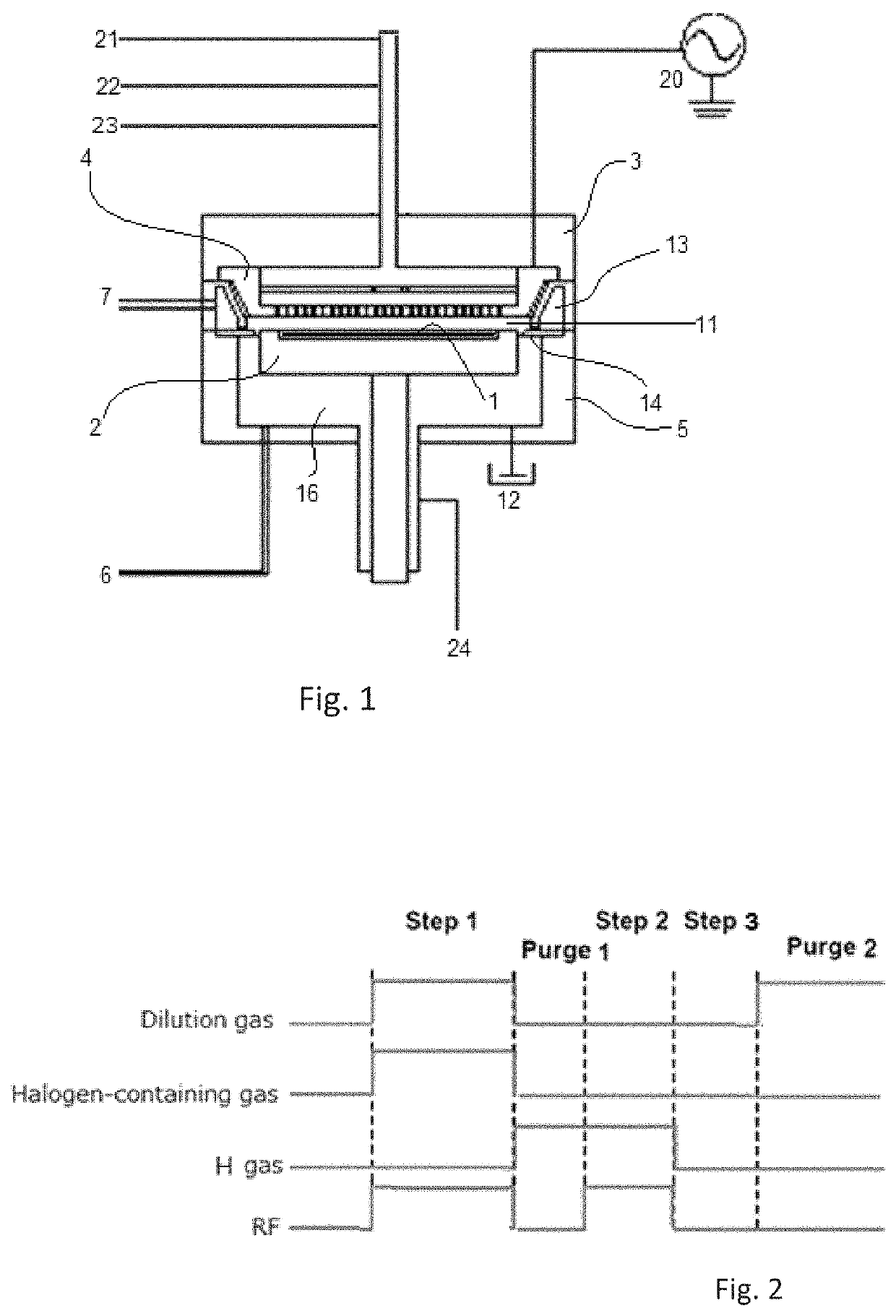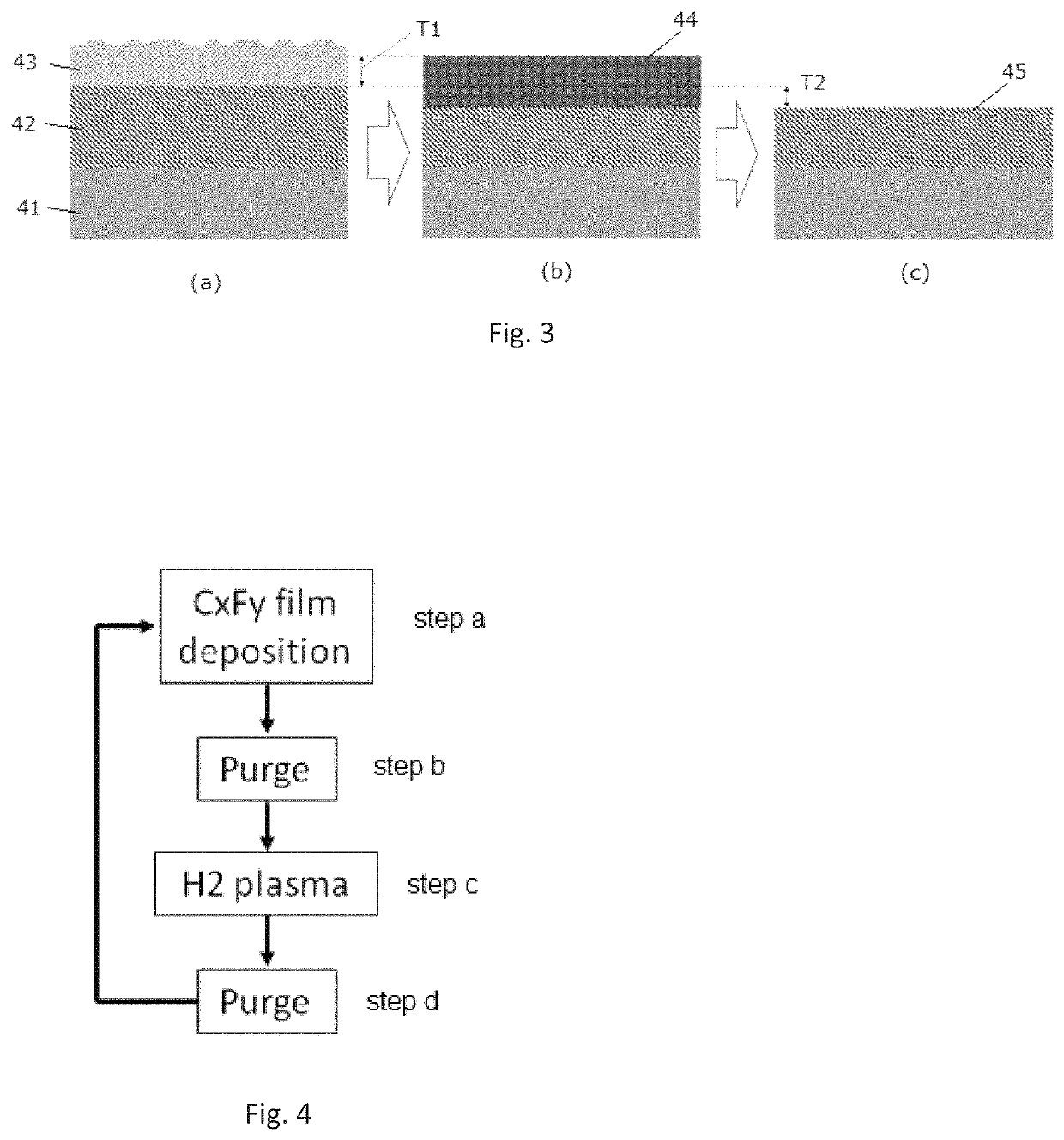Method of atomic layer etching using hydrogen plasma
a technology of hydrogen plasma and atomic layer, which is applied in the direction of basic electric elements, semiconductor/solid-state device manufacturing, electric devices, etc., can solve the problems of poor in-plane uniformity of etching of film on a substrate by ale, inability to achieve good in-plane uniformity of etching, and suffer from in-plane uniformity. etching, the effect of high selectivity
- Summary
- Abstract
- Description
- Claims
- Application Information
AI Technical Summary
Benefits of technology
Problems solved by technology
Method used
Image
Examples
example 1 (
Prophetic Example)
[0059]A silicon oxide film, silicon nitride film, and silicon carbide film are formed at a thickness of about 20 nm by PEALD or PECVD as a target layer on 300-mm substrates, respectively. Deposition of an etchant film (CF film) and etching of each target layer are conducted under the conditions shown in Table 3 below using the plasma-assisted etching apparatus illustrated in FIG. 1. The sequence used in each etching cycle is shown in FIG. 2.
[0060]
TABLE 3(numbers are approximate)Conditions for deposition (PECVD)Substrate temperatureRoom temperaturePressure2.0 PaDeposition gasC2F6Noble gas (as a dilution gas)ArFlow rate of deposition gas10 sccm(etchant gas) (continuous)Flow rate of dilution gas2000 sccm(continuous)RF power for a 300-mm wafer100 W; 13.56 MHz (or 27 MHz,6 MHz, or microwaves)Duration of “RF” (Step 1)2.0 sec.Distance between electrodes30 mmGrowth rate per cycle (nm / cycle)0.7 nm / cycFilm thickness (nm)2.0 nmConditions for etchingSubstrate temperatureSame a...
PUM
 Login to View More
Login to View More Abstract
Description
Claims
Application Information
 Login to View More
Login to View More - R&D
- Intellectual Property
- Life Sciences
- Materials
- Tech Scout
- Unparalleled Data Quality
- Higher Quality Content
- 60% Fewer Hallucinations
Browse by: Latest US Patents, China's latest patents, Technical Efficacy Thesaurus, Application Domain, Technology Topic, Popular Technical Reports.
© 2025 PatSnap. All rights reserved.Legal|Privacy policy|Modern Slavery Act Transparency Statement|Sitemap|About US| Contact US: help@patsnap.com


